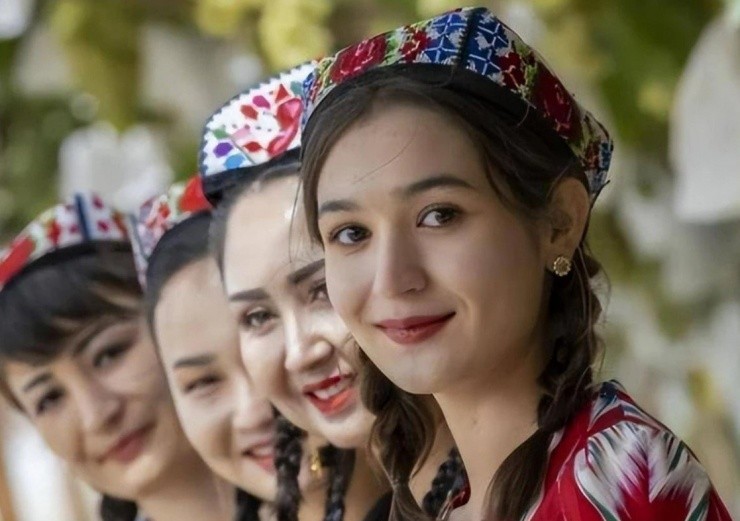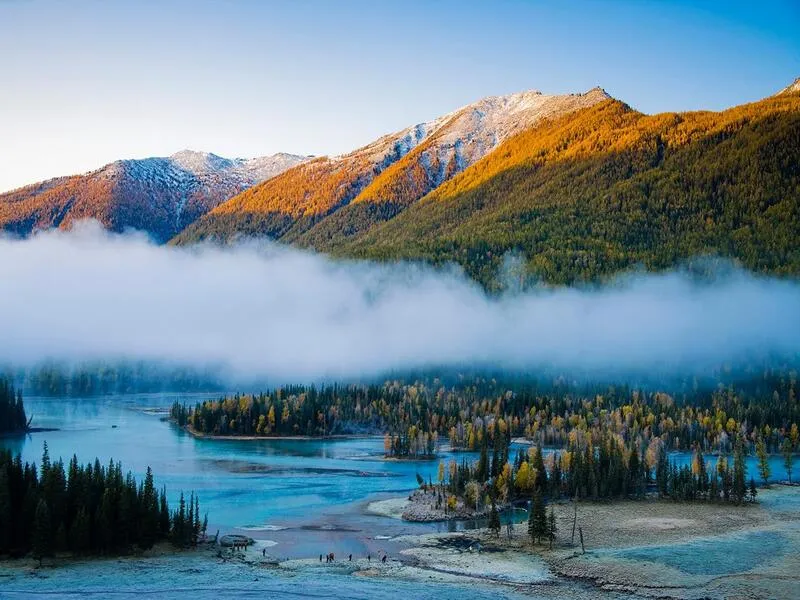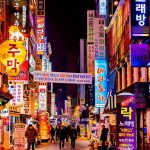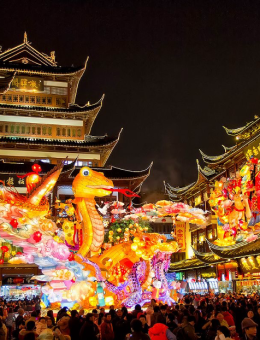Where exactly is Xinjiang, China? Xinjiang has long been a captivating destination for travelers from around the world, a land both mysterious and poetic. For visitors who love adventure and discovery, Xinjiang is a place you should set foot in at least once in your life. The legends of Xinjiang win over even the most demanding guests with its breathtaking natural scenery. Let’s explore what makes Xinjiang so memorable.
Table of Contents
- 1. Where is Xinjiang, China?
- 2. The History of Xinjiang
- 3. Ethnic Groups and People of Xinjiang
- 4. Favorite Places to Visit in Xinjiang
- 4.1 Hemu Village
- 4.2 Kanas Lake
- 4.3 Five-Colored Bay
- 4.4 Moguicheng
- 4.5 The Ancient City of Kashgar
- 4.6 The Ili Valley
- 5. Xinjiang Specialties
- 5.1 Xinjiang Red Dates
- 5.2 Kunlun Snow Chrysanthemum Tea
- 6. Notable Dishes in Xinjiang
- 6.1 Xinjiang Braised Chicken Soup
- 6.2 Grilled Meat Skewers
- 6.3 Lamb Fried Rice
- 6.4 Sticky Rice Jujube Cake
- 7. Travel Notes for Xinjiang
- 9. Frequently Asked Questions about Xinjiang
1. Where Is Xinjiang, China?
Xinjiang is an autonomous region of the People’s Republic of China. It ranks twenty-fourth in population among Chinese provincial-level units, with about 24 million residents. The Tianshan Mountains divide Xinjiang into two large basins: the Dzungarian Basin in the north and the Tarim Basin in the south. Xinjiang borders Russia, Mongolia, Kazakhstan, Kyrgyzstan, Tajikistan, Afghanistan, Pakistan, and India.

Although Xinjiang covers around 1.6 million square kilometers—roughly one-sixth of China’s land area—only about 4.3% is suitable for human settlement. The region is commonly referred to as Northern Xinjiang and Southern Xinjiang, two areas that differ markedly in living conditions and culture.
The regional capital is Ürümqi, located in the south’s cultural sphere of the Uyghur people. Northern Xinjiang is home largely to pastoral Kazakh communities and offers many outstanding landscapes that draw travelers from across China and beyond.
2. The History of Xinjiang
Xinjiang has passed through many historical phases. From its earliest times to the present day, the region is often described through eleven major periods: the formative era; the era of conflicts between the Xiongnu and the Han; the post-Han period; the Turkic Khaganates; the Tang dynasty; the Uyghur Khaganate; Western Liao; the period of Mongol rule; the Qing dynasty (including westward expansion and campaigns that brought Ili under control); the Republic of China era; and, finally, from 1945 to the present.
Marked by upheavals and transitions, Xinjiang stands as a historical crossroads. For centuries it served as China’s western gateway along the trade routes into Central Asia, leaving traces scattered across the region. This was a flourishing chapter in the saga of the legendary Silk Road linking East and West.
3. Ethnic Groups and People of Xinjiang
Xinjiang’s population includes many ethnic communities (around ten major groups), notably the Uyghurs, Han Chinese, Kazakhs, Kyrgyz, Hui, Russians, and Mongols. This diversity makes Xinjiang’s culture vibrant and multifaceted, promising visitors memorable experiences.
Most residents in Xinjiang follow Islam. In addition to the Uyghurs, there are diasporic communities from neighboring countries, with significant numbers from Central Asia.
Many people in Xinjiang have features reflecting a blend of Asian and European ancestries—fair skin, large eyes, high-bridged noses, and strong eyebrows—giving them a distinctive beauty. Life remains closely tied to nature, and traditional livelihoods include agriculture, herding, handicrafts, hunting, and trading.

4. Favorite Places to Visit in Xinjiang
Beyond the renowned beauty of its women, Xinjiang is a traveler’s paradise with an array of striking destinations. The region features a rare mix of snow-capped mountains, deserts, and grasslands. Here are some of the most distinctive places to consider.

4.1 Hemu Village
Hemu—also known as He Mu—is often called one of the most beautiful villages in China and is mainly inhabited by the Tuva (Tuwa) people. The village sits in a serene, idyllic setting embraced by green mountains and clear streams. Endless birch forests surround the settlement, creating a peaceful scene that invites visitors to sink into nature.
Hemu is among the few villages that still preserve traditional ways of life once common across northern Xinjiang. Located roughly 10 kilometers from Russia’s Siberian border, it is a must-visit for anyone planning a journey to Xinjiang.
4.2 Kanas Lake
Kanas Lake lies within the Kanas Nature Reserve and captivates with its otherworldly beauty. Often cited as one of the deepest, cleanest lakes in China—formed roughly 200,000 years ago—it sits in the far northwest of the country. At times shrouded in heavy mists, the area remains little known even among many domestic travelers.
Its wild landscapes feel tinged with mystery: snow-clad peaks throughout the year, alongside lush, pristine forests. The effect is sweeping and unforgettable.
4.3 Five-Colored Bay
Five-Colored Bay is located in Burqin County, about 650 kilometers from the regional capital. It is famous for vast “rainbow” rock formations sculpted by wind and rain over millions of years. Layers of vividly hued rock shapes rise and fold, creating a natural gallery of color.
With riparian woodlands and the Irtysh River winding through, the bay is especially magical at sunset—an ideal time to appreciate the site’s romantic, singular character.
4.4 Moguicheng
Moguicheng—literally “City of Demons”—is known for eerie legends. This abandoned desert area on the fringes of Xinjiang is associated with strange sounds: cries resembling women and children, and distant roars like wild beasts. The landscape features wind-carved mounds, rock faces resembling masks, and ruins that intensify its uncanny mood.
Visitors come not only for the stark, primordial beauty but also for the unsettling soundscape that has made the site famous.
4.5 The Ancient City of Kashgar
Kashgar is a storied city on the Silk Road, shaped by centuries of exchange between East and West. Its architecture reflects the allure of both Central and West Asian traditions, with occasional echoes of the classical Mediterranean. Wandering its lanes and markets reveals a side of China distinct from what many expect.
4.6 The Ili Valley
The Ili Valley is renowned for seemingly endless lavender fields that sweep to the horizon, evoking the romance of distant Provence. In summer, the violet blossoms perfume the air and paint the countryside in dreamy tones, creating a setting that lingers in memory.
5. Xinjiang Specialties
5.1 Xinjiang Red Dates
Xinjiang is famous for its red dates (jujubes), regarded as a nourishing food prized for improving sleep and overall well-being. Often celebrated as a beauty aid, these dates are considered a thoughtful gift to take home after a visit.
5.2 Kunlun Snow Chrysanthemum Tea
Another signature product is tea made from the snow chrysanthemum of the Kunlun Mountains. Considered a premium ingredient, it is associated with skincare benefits, eye health, and better sleep—an emblematic taste of Xinjiang worth trying.
6. Notable Dishes in Xinjiang
6.1 Xinjiang Braised Chicken Soup
This hearty dish brings together chicken, potatoes, bell peppers, onions, Sichuan peppercorns, and even beer. Though the name sounds familiar, the version found here is distinctive. Served with hand-pulled noodles or bread, it is the kind of meal that stays with you long after you leave.
6.2 Grilled Meat Skewers
No trip to Xinjiang is complete without sampling street-side skewers. Marinated and grilled over glowing coals, the fragrant meat perfumes entire blocks and draws crowds with irresistible aromas.
6.3 Lamb Fried Rice
Lamb is a culinary hallmark of Xinjiang, and it shines in this rustic fried rice dish rooted in Uyghur herding traditions. Carrots, onions, and lamb are cooked together before rice and water are added, yielding a richly flavored one-pot meal. Raisins or dried apricots are sometimes sprinkled on top for a touch of sweetness.
6.4 Sticky Rice Jujube Cake
Among Uyghur and broader Xinjiang communities, breads and pastries are staples. A beloved breakfast is a sticky rice cake steamed in earthenware, scented with red dates and red beans—simple, comforting, and deeply local.
7. Travel Notes for Xinjiang
Compared with many other Chinese cuisines, Xinjiang dishes tend to be less oily, which many Vietnamese travelers find easy to enjoy. Because the region is in the north, flavors can skew a bit spicy and salty; bring familiar snacks if you have a sensitive palate.
Be mindful when taking photos. In Xinjiang, photographing police is not permitted. In areas such as Ürümqi and Kashgar (outside designated attractions), it is wise to limit photography, as checks are common.
Security has at times been a concern in recent years due to terrorism and political tensions. That said, authorities have made extensive efforts to protect foreign visitors, with surveillance systems deployed widely to help ensure safety.
If traveling with a group, having someone who speaks Mandarin will make communication with guides far smoother, as finding English-language support for an entire route can be challenging. Joining an organized itinerary is also a practical way to navigate language differences when exploring a new region.
9. Frequently Asked Questions about Xinjiang
1. Is Xinjiang part of China?
Yes. Xinjiang is a provincial-level administrative unit of China.
2. What are some famous foods in Xinjiang?
Notable dishes include Xinjiang braised chicken soup, grilled meat skewers, lamb fried rice, sticky rice jujube cake, hand-pulled noodles, cold liangpi noodles, leghman, pomegranate juice, and lamb soup with bread crumbs, among others.
3. What language do people speak in Xinjiang?
Uyghur is widely used across social and political life in the region, alongside other community languages and Mandarin.










